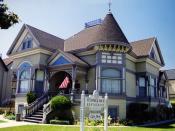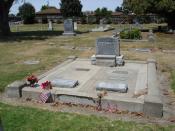Everything is arbitrary. For example; how does one know what is hot, without knowing what cold is? This to, is the rule for good and evil. Good and evil are interrelated, as expressed in the novel East of Eden by John Steinbeck, or at least more interrelated than one might expect. "We all have the potential for good and evil, but being evil is a choice," states Lee, a servant who acts like the philosopher in the novel and who, perhaps expresses Steinbecks views on the subject. Steinbeck also went as far to say that, "They [good and evil] might be so balanced that if a man went too far either way, an automatic slide would restore the balance." In this quote we have a glimpse of how complex the symbiotic relationship between the two directions one could take in their life. However Steinbeck also uses symbolism, the theory that evil can be the root of good, and differences between good and evil to demonstrate his supposition.
There are many forms of symbolism that Steinbeck uses throughout the novel to glorify his thesis. One such symbolism is the very opening of the novel. While describing the Salinas Valley, he states that he remembers, as a boy, that the Gabilan Mountains to the East were "light, gay mountains full of sun and loveliness," but to the West were the Santa Lucia Mountains, dark and brooding. This example, although not important to the plot, sets the tone of the story, and foreshadows a conflict, as the Salinas Valley, where most of the novel takes place, is situated right in between the two mountain ranges. The most prominent symbols of good and evil are the actual characters in the novel. Right from the beginning of the stroy Steinbeck makes it obvious that...


